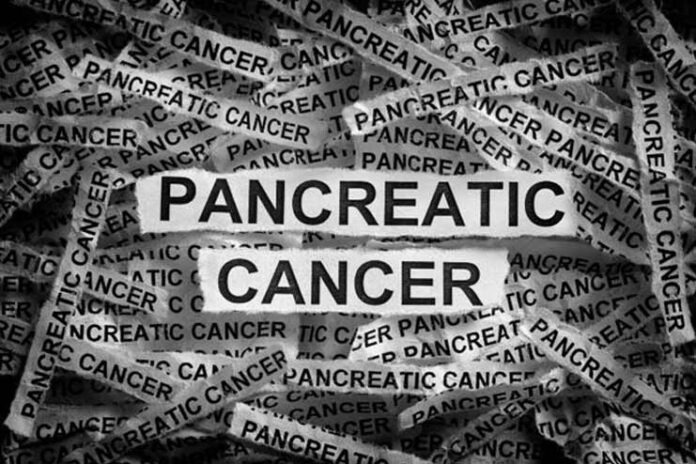Affiliate Disclaimer
Some links in this article are affiliate links. We may earn a small commission if you make a purchase through these links, at no extra cost to you. We only recommend products we find useful to our readersWhen cells in your pancreas mutate (change) and grow uncontrollably, a tumor is formed, known as pancreatic cancer. In your abdomen, or belly, the pancreas is a gland that is situated between your stomach and spine. It produces the hormones that regulate blood sugar levels and digestive enzymes.
The pancreatic ducts are where the majority of pancreatic malignancies begin. The significant pancreatic duct connects your pancreas and the common bile duct. Diagnostic procedures reveal little about pancreatic cancers in their early stages. Because of this, a lot of patients don’t get diagnosed with cancer until it has spread (metastasized). Additionally, pancreatic cancer is notoriously hard to treat because it is resistant to several popular cancer medications.
Also, read: New Study Finds Mechanisms By Which Pancreatic Cancer Cells Avoid Starvation
1. Digestive Issues and Abdominal Pain

Bloating, indigestion, and abdominal discomfort are common digestive ailments that are uncomfortable and disruptive. Bloating, or the sensation of fullness or swelling in the stomach, can cause discomfort and a bloated belly. After eating, you may experience indigestion, characterized by discomfort or burning feeling in your upper abdomen, followed by nausea or a sour taste.
The location and intensity of abdominal pain might vary, indicating underlying problems. It usually centers around the stomach or lower abdomen and may be acute or cramping. There are moments when this agony travels to the sides or back. These are common symptoms, but they may also be the first signs of pancreatic cancer. Sometimes, people easily disregard subtle stomach discomforts, which may be the first sign of pancreatic cancer.
Identifying these symptoms and their patterns is essential to detect them early and treat them effectively. It’s crucial to see a doctor if you have ongoing stomach pain or digestive problems to rule out more severe disorders and guarantee prompt treatment.
Also, read: Causes, Symptoms, Treatment and Prevention of Upper Abdominal Pain
2. Unexplained Weight Loss and Loss of Appetite

Unexpectedly losing weight suddenly can be a significant early warning indicator of serious health problems, such as pancreatic cancer. Cancer-related weight loss, sometimes referred to as cancer cachexia, is a complicated issue that alters how the body processes protein and calories. Cancer cachexia can lead to increased caloric expenditure, muscular atrophy, and decreased appetite.
Appetite loss may be another warning sign connected to cancer development. Tumor growth can impact the digestive tract and change hunger signals, which might result in a decreased urge to eat. This appetite reduction weakens the body’s general health and weight loss. Identifying specific symptoms, such as appetite and weight loss, is essential to receiving an early diagnosis and appropriate treatment.
3. Jaundice (Yellowing of Skin and Eyes)

While you may often encounter jaundice-related symptoms, doctors frequently misdiagnose many pancreatic cancer symptoms as gastrointestinal problems or stress. When a tumor in the pancreas head obstructs the bile duct, it can result in jaundice, which is painless and manifests as symptoms like dark urine, pale, oily feces that float in the toilet, and pruritus (itchy skin).
Since doctors frequently observe jaundice before other pancreatic cancer symptoms appear, it serves as a crucial early warning sign. It’s critical to consult a doctor if you notice any changes to your eyes, skin, or bowel patterns. Identifying jaundice as a possible indicator of pancreatic cancer can lead to early detection and better treatment outcomes.
Also, read: How To Cure Jaundice: Effective Treatment
4. New-Onset Diabetes or Blood Sugar Changes

Having diabetes for the first time can sometimes be an early indicator of pancreatic cancer, even in individuals who have never had any previous issues with their blood sugar levels. The pancreas produces insulin, which is a key component in controlling blood sugar levels. When pancreatic cancer develops, it has the potential to disrupt this function, which can result in rapid and unexpected shifts in the levels of sugar in the blood.
Numerous individuals who have been diagnosed with pancreatic cancer have reported the onset of diabetes or difficulties in maintaining blood sugar levels that were previously steady. Both hyperglycemia, or elevated blood sugar, and hypoglycemia, or decreased blood sugar, are potential symptoms of this illness. It is essential to consider the possibility of experiencing a warning sign if you suddenly encounter spikes or decreases in your blood sugar without any apparent reason.
5. Fatigue and Weakness

People with pancreatic cancer often experience a lack of energy, also known as fatigue or physical weakness not related to any physical exertion. Trouble sleeping and feeling depressed may be linked to this. This persistent exhaustion is more than just going through the motions of feeling tired after a long day; it is a profound and unyielding weariness that impacts daily activities and the quality of life in general.
It is partly because cancer cells use up a significant amount of the body’s energy, leaving less for the body to use for normal operations. Furthermore, while the body deals with the sickness, it expends even more energy, which results in a persistent sense of weakness. Fatigue pancreatic cancer symptoms are sometimes overlooked or attributed to stress or the natural process of aging, yet they have the potential to serve as early warning indications.
Also, read: 15 Ways To Beat Afternoon Fatigue – Tide The Slumber!
6. When to See a Doctor

It’s critical to get medical help if you have chronic symptoms such as lethargy that doesn’t go away, jaundice, unexplained weight loss, or stomach pain. Early detection of these symptoms could indicate pancreatic cancer and greatly enhance treatment results. Early detection and screening for pancreatic cancer are essential, particularly if you have risk factors such as recently developed diabetes or a family history of the disease.
Your physician might suggest screening and diagnostic procedures, including blood work, endoscopic ultrasounds (which provide a clear image of the pancreas), or imaging scans (MRI or CT). These examinations assist in locating abnormalities and can verify whether more research is required.
Don’t delay if you experience any of the previously listed symptoms or if you are worried about your risk of pancreatic cancer. Always pay attention to your body; if you’re unsure about anything, speak with your doctor about possible tests and what to do next.
Conclusion
A pancreatic cancer diagnosis has the power to drastically alter one’s life. Better results occur when it is detected early. Socializing with like-minded individuals can uplift and improve your mental and emotional well-being. Radiation therapy, chemotherapy, and surgery are the available treatments for pancreatic cancer. When pancreatic cancer is confined, the five-year survival rate can be up to ten times higher than when the illness spreads to other regions.
References
- https://www.mayoclinic.org/diseases-conditions/pancreatic-cancer/symptoms-causes/syc-20355421
- https://www.cancer.org/cancer/types/pancreatic-cancer/detection-diagnosis-staging/signs-and-symptoms.html
- https://my.clevelandclinic.org/health/diseases/15806-pancreatic-cancer
- https://www.hopkinsmedicine.org/health/conditions-and-diseases/pancreatic-cancer/pancreatic-cancer-symptoms
- https://pancan.org/facing-pancreatic-cancer/diagnosis/early-detection/
- https://pancan.org/facing-pancreatic-cancer/symptoms
- https://www.nhsinform.scot/illnesses-and-conditions/cancer/cancer-types-in-adults/pancreatic-cancer
- https://www.pancreaticcancer.org.uk/information/signs-and-symptoms-of-pancreatic-cancer
- https://www.webmd.com/cancer/pancreatic-cancer/pancreatic-cancer-symptoms
- https://badgut.org/information-centre/a-z-digestive-topics/pancreatic-cancer
- https://www.mskcc.org/cancer-care/types/pancreatic/symptoms
- https://www.medicalnewstoday.com/articles/female-early-signs-of-pancreatic-cancer#summary




















